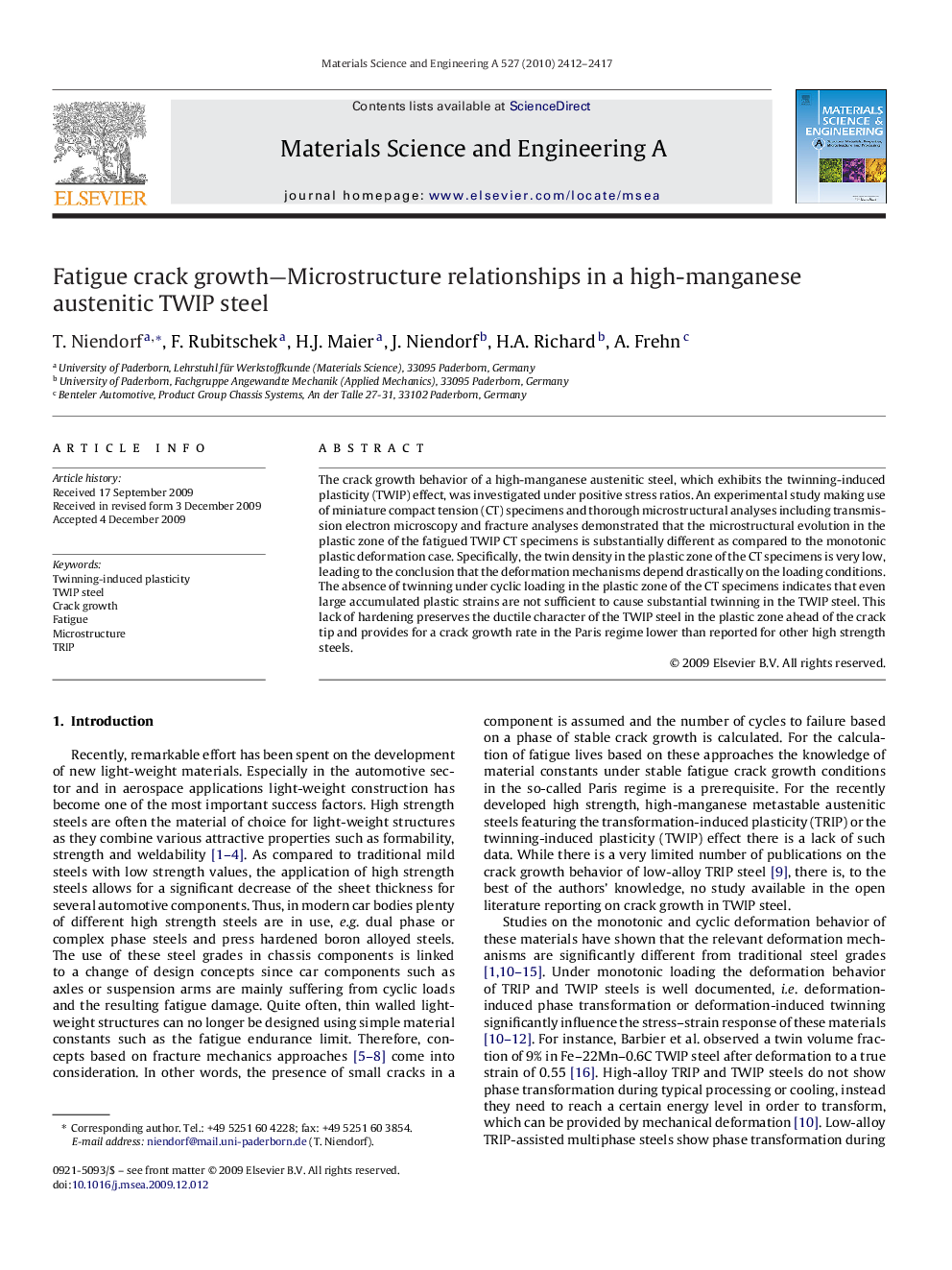| Article ID | Journal | Published Year | Pages | File Type |
|---|---|---|---|---|
| 1579837 | Materials Science and Engineering: A | 2010 | 6 Pages |
Abstract
The crack growth behavior of a high-manganese austenitic steel, which exhibits the twinning-induced plasticity (TWIP) effect, was investigated under positive stress ratios. An experimental study making use of miniature compact tension (CT) specimens and thorough microstructural analyses including transmission electron microscopy and fracture analyses demonstrated that the microstructural evolution in the plastic zone of the fatigued TWIP CT specimens is substantially different as compared to the monotonic plastic deformation case. Specifically, the twin density in the plastic zone of the CT specimens is very low, leading to the conclusion that the deformation mechanisms depend drastically on the loading conditions. The absence of twinning under cyclic loading in the plastic zone of the CT specimens indicates that even large accumulated plastic strains are not sufficient to cause substantial twinning in the TWIP steel. This lack of hardening preserves the ductile character of the TWIP steel in the plastic zone ahead of the crack tip and provides for a crack growth rate in the Paris regime lower than reported for other high strength steels.
Related Topics
Physical Sciences and Engineering
Materials Science
Materials Science (General)
Authors
T. Niendorf, F. Rubitschek, H.J. Maier, J. Niendorf, H.A. Richard, A. Frehn,
